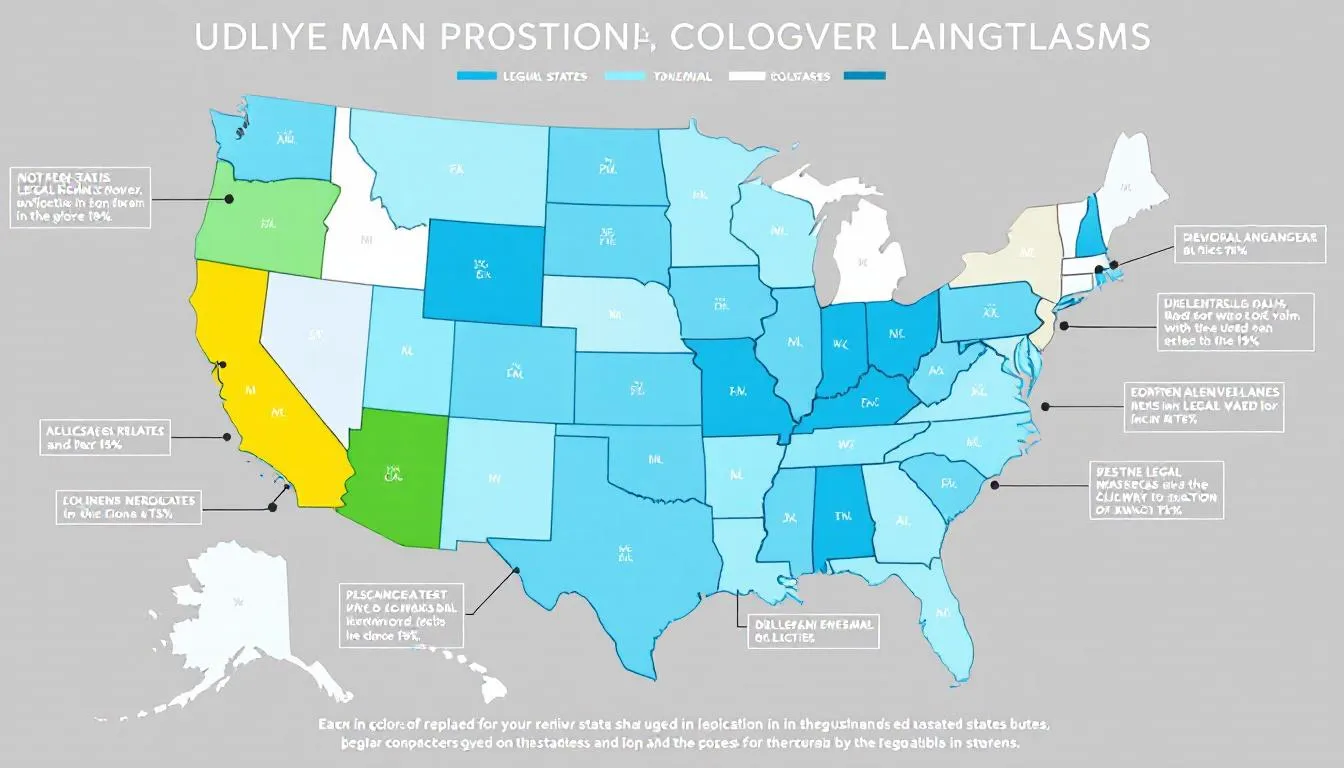How To Get Security Deposit Back:
Only 41% of renters expect to get their full security deposit back, but it doesn’t have to be this way. Whether you’re moving out or already facing deposit deductions, knowing your rights and following the rules can make a big difference.
Security deposits are typically one month’s rent and are meant to protect the landlord against property damage, unpaid rent or lease violations. But many tenants lose part of their deposit due to unfair charges or simple mistakes that could have been avoided.
This guide will walk you through everything you need to do to get your security deposit back, from documentation strategies to legal options.
Security Deposits
- Security deposits are typically one month’s rent and must be returned within 14-30 days after move-out (varies by state)
- Document everything with photos and videos at move-in and move-out to protect yourself
- Landlords can only deduct for damages beyond normal wear and tear, unpaid rent or excessive cleaning
- Clean thoroughly, remove all belongings and request a final walkthrough before moving out
- If your deposit isn’t returned properly, you can sue in small claims court for up to $10,000-$12,500
- Only 41% of renters expect to get their full deposit back, but following the rules increases your chances
Your Security Deposit Rights

A security deposit is money you pay upfront, usually held in an interest bearing account, to protect the landlord against losses. But there are strict rules governing how landlords can use these funds and when they must return them. Landlords must notify tenants of deposit related changes, such as ownership transfers, via certified mail to ensure proper documentation.
Security deposits cannot exceed one to two months’ rent in most states, though specific limits vary by state. The lease should clearly state the deposit amount and conditions for its return. The lease term defines the length of tenancy and breaking the lease term can result in loss of security deposit.After you move out, landlords have 14-30 days to return your deposit, depending on state law. During this time they must provide an itemized statement of any deductions. Some states require receipts or invoices for deductions over $125 to ensure transparency.
You’re entitled to your full security deposit unless legitimate deductions apply. In some states if your deposit was held in an interest bearing account for over a year you may also be owed interest. The interest rate is usually set by state law and determines how much interest tenants are entitled to.
What Landlords Can and Cannot Deduct
Knowing what’s allowed is key to protecting your deposit. Landlords can deduct money owed for:
Allowed deductions:
- Unpaid rent or utility bills at move-out
- Repairs for tenant caused damage beyond normal wear and tear
- Excessive cleaning costs when the rental unit isn’t returned in the same condition as received
- Replacement of items damaged by tenant negligence
A landlord deduct is only allowed for these specific reasons and must be documented.
Not allowed deductions:
- Normal wear and tear from ordinary living
- Pre-existing damage documented at move-in
- Standard maintenance like repainting after several years
- Carpet replacement due to ordinary wear from normal use
For example a common dispute arises when a landlord deducts from the security deposit for carpet cleaning, claiming damage, but the tenant argues it’s just normal wear and tear.
Examples of normal wear include faded paint, minor scuff marks on walls, small nail holes from hanging pictures, and carpet matting from furniture placement. But large holes in walls, carpet burns or permanent stains, broken fixtures or pet damage beyond ordinary wear is considered legitimate damage charges.
The key is whether the damage exceeds what’s expected from reasonable use during the rental period. Any deduction must be for a reasonable amount based on the extent of the damage. When the landlord claims excessive damage they must prove it goes beyond normal wear and provide documentation to support their charges.
Before Tenant Moves Out

A tenant is using a smartphone to take detailed photos of their apartment’s condition, documenting the state of the rental unit before moving out to ensure they can secure the return of their full security deposit. The images capture various areas of the apartment, highlighting both normal wear and tear as well as any personal belongings that will be removed.
Preparation is your best defense against unfair deposit deductions. When a tenant moves out proper preparation means a smoother deposit return process. Start planning at least 30 days before your intended move-out date to give yourself time to address any issues.
Begin by reviewing your original move-in checklist and photos to compare the property’s current condition. This comparison will help you identify areas that need attention before the final walk-through.Give your landlord written notice according to your lease agreement – usually 30 days. If the monthly rent has changed due to lease renewal or increase confirm the correct deposit amount with your landlord. Include your forwarding address in this notice so you receive your deposit return and any required documents.
Schedule a pre-move-out inspection if your state offers this option. Many tenants overlook this valuable opportunity to identify and fix issues before the final walk-through. During this inspection document any concerns the landlord raises and get clarification on expectations.
Do minor repairs yourself when possible to avoid inflated contractor charges. Simple fixes like filling small nail holes, replacing burned out light bulbs or touching up minor paint scratches can save you big on deductions. But don’t do DIY repairs that might cause more damage – when in doubt consult the landlord first. Leaving the premises in good condition is important not only for your deposit return but also to prepare the unit for the next tenant.
Documentation Strategy
Documentation is your best evidence if disputes arise. Create a comprehensive record that tells the whole story of your tenancy.
Take detailed photos and videos of every room, focusing on floors, walls, appliances, fixtures and any existing damage. Include close up shots of problem areas and wide angle views of the overall condition. Date stamp all photos and videos for legal evidence.
Create a written inventory comparing the property’s move-in condition to its current state. Note any changes, improvements or deterioration and cross reference with your original documentation.
Keep copies of all repair requests and the landlord’s responses throughout your tenancy. This paper trail shows you maintained the property and reported issues promptly.
Document your forwarding address delivery with return receipt requested to prove proper notification. This prevents landlords from claiming they couldn’t return your deposit because they couldn’t find you.
Move-Out Day Best Practices

Move-out day execution can make or break your deposit return. Approach this day systematically to avoid missing anything important.
Remove all personal belongings, furniture and personal items completely. Many tenants underestimate how thoroughly they need to clear the space. Check cabinets, closets, storage areas and outdoor spaces for forgotten items. Abandoned items often trigger disposal fees that come out of your deposit.
Clean the entire apartment from top to bottom, to the same condition you received it in. This isn’t just basic tidying – it means deep cleaning that addresses the dirt and grime that’s accumulated over your entire tenancy.Consider hiring professional cleaners if you can’t get it spotless yourself. Professional cleaning receipts provide documentation of your efforts and may cost less than potential cleaning deductions. Many landlords charge premium rates for professional cleaning when tenants leave units not cleaned to their standards.
Return all keys, garage remotes, access cards and other rental property to the landlord. Missing items often result in lock replacement charges or security system reprogramming fees. Before move-out make sure all outstanding rent, security deposits and any administrative fees are paid in full to avoid delays or deductions.
Do a final walk-through with the landlord if possible. Document any agreed upon conditions and note any disputes in writing. This walk-through allows you to address concerns immediately rather than finding them out later through deduction notices. During the walk-through confirm the payment method and timeline for the landlord to return the security deposit and how any damages or interest will be paid.
If you don’t receive your security deposit within the expected timeframe send a written request to the landlord to return the security deposit and consider legal action if necessary.
Professional Cleaning Checklist
A systematic approach to cleaning helps you not miss areas that trigger deductions:
Kitchen deep cleaning:
- Clean inside refrigerator, oven, microwave and all cabinets
- Scrub stovetop, backsplash and inside drawers
- Degrease range hood and clean sink
Bathroom scrubbing:
- Scrub tile grout, fixtures and behind toilet
- Clean inside medicine cabinets and vanity drawers
- Remove soap scum and mineral deposits from shower/tub
General areas:
- Vacuum and shampoo carpets or thoroughly mop hard floors
- Wipe down all walls, baseboards and light fixtures
- Clean windows, blinds and make sure all light bulbs work
- Remove any adhesive residue from walls or surfaces
- Hire a professional for a move out carpet cleaning
The goal is to return the rental unit to move-in condition, accounting for normal wear and tear. Professional level cleaning often prevents disputes and shows good faith effort to meet lease obligations.
What to Do if Your Deposit Isn’t Returned

When your landlord doesn’t return your deposit properly, systematic escalation often resolves issues without court involvement. Returning security deposits is governed by strict legal requirements including deadlines and documentation. Start with communication and escalate to legal remedies if necessary.Wait for the legal deadline in your state before taking action—typically 14-30 days after move-out. These time limits are set by law and are crucial to follow as premature demands may weaken your position if legal action becomes necessary.
If no refund or incomplete refund, request an itemized statement in writing. Many states require landlords to provide detailed deduction lists automatically but requesting one in writing creates a paper trail for potential legal proceedings.
Review charges carefully and identify any deductions for normal wear and tear or pre-existing conditions. If a tenant disputes the deductions they should do so in writing. Common improper charges include routine painting, carpet replacement due to ordinary wear or repairs for damage documented at move-in.
Send a formal demand letter citing specific state laws and deadlines when the landlord refuses to return money owed. This letter should reference your documentation, dispute improper charges and demand return of the wrongfully withheld amount within a reasonable timeframe.
If informal resolution fails, file a complaint with your state attorney general’s office or housing authority. Many states have landlord-tenant mediation programs that can resolve disputes without court costs.
Small Claims Court
Small claims court is an option when landlords wrongfully withhold deposits. Most states allow tenants to sue for deposit recovery without attorneys, making this a cost effective option for many situations.
File your lawsuit within the statute of limitations—typically 2-4 years depending on your state. Court filing fees usually range from $30-100 making litigation affordable compared to potential recovery amounts.
Small claims courts handle deposit disputes up to $5,000-$12,500 depending on the jurisdiction. This covers most residential security deposits and potential damages for wrongful withholding.
Bring all documentation to court: lease agreement, photos from move-in and move-out, receipts for cleaning or repairs, correspondence with the landlord and itemized deduction statements. Judges rely heavily on documentary evidence in these cases.
Many states allow double or triple damages when landlords act in bad faith by wrongfully withholding deposits. These penalties can make litigation worthwhile even for smaller deposit amounts.
The burden is on the landlord to justify their deductions especially when tenants have thorough documentation of property condition and proper procedures.
State-Specific

While general principles apply nationwide, specific requirements vary greatly between states. Knowing your state laws gives you an advantage in deposit recovery.
Return timeframes vary:
- Some states require return within 14 days
- Others allow up to 30 days* A few states allow longer periods in specific situations
Interest varies:
- Some states require interest on deposits held over one year
- Interest rates are set by state law or market rates
- Some jurisdictions require deposits in separate interest bearing accounts
Documentation requirements differ:
- Receipt thresholds for deductions range from $75-$150 in different states
- Some states require specific forms for itemized statements
- Certain jurisdictions require photographs or video evidence for major deductions
Penalties vary:
- Double damages for bad faith withholding
- Some states allow triple damages or additional attorney fees
- Penalties for landlords who miss return deadlines
Most states prohibit tenants from using the security deposit as last month’s rent. Trying to do so can result in forfeiture of deposit rights and may lead to legal disputes with the landlord.
New York tenants benefit from recent reforms that limit deposits to one month’s rent and require return within 14 days. California tenants can demand receipts for deductions over $126 and may recover double damages for wrongful withholding.
Research your state and local laws before move-out. Many state attorney general websites have tenant guides with jurisdiction specific requirements and timelines.
Common Mistakes That Cost Tenants Money
Avoiding common pitfalls makes a big difference in full deposit recovery. Many tenants lose money through preventable mistakes rather than legitimate damage charges.
Documentation failures are the costliest mistakes. Not photographing the apartment condition at move-in leaves tenants unable to dispute charges for pre-existing damage. Not documenting communications with the landlord about repairs or maintenance requests eliminates crucial evidence for disputes.
Improper repairs often backfire when tenants try to fix things beyond their skill level. What starts as a small nail hole can become a large patch job requiring professional repair. When unsure about repair procedures, consult the landlord or hire professionals rather than risk making damage worse.
Leaving personal belongings triggers disposal fees that many tenants don’t anticipate. Even small items left behind can justify charges for removal and cleaning. Schedule extra time for thorough move-out preparation to avoid rush-related oversights.
Notice violations can void deposit return rights entirely. Failing to provide proper written notice, not including a forwarding address or trying to use the security deposit as last month’s rent are serious lease violations that often result in forfeiture of deposit rights.Skipping pre-move-out inspections wastes opportunities to address concerns before final assessment. Many tenants avoid these inspections due to scheduling difficulties but the time investment often prevents much larger deduction amounts.
Poor cleaning preparation leads to excessive cleaning charges that could have been avoided with proper effort. Professional-level cleaning costs less than landlord cleaning charges and shows good faith compliance with lease obligations.
If the property is sold during your lease, the new landlord is responsible for returning the security deposit according to the original lease terms.
Knowing landlords profit from keeping deposits creates incentive for questionable charges. But tenants who follow proper procedures and keep thorough documentation successfully challenge most unfair deductions.
FAQ – Frequently Asked Questions
Q: Can I use my security deposit as last month’s rent? A: No, using your security deposit to pay rent violates most lease agreements and state laws. The deposit is for damages and unpaid fees, not rent substitution. This violation often results in eviction proceedings and forfeiture of deposit return rights.
Q: How long does my landlord have to return my deposit? A: Return timeframes are 14-30 days depending on state law, 30 days is most common. Some states allow longer if itemized statements are provided within the initial deadline.
Q: What if my landlord charges me for normal wear and tear? A: Dispute these charges in writing, referencing your state’s normal wear and tear definitions. If informal resolution fails, small claims court is an option. Judges often rule against landlords who charge for ordinary aging and use.
Q: Do I need receipts for cleaning or repairs I did myself? A: Yes, keep receipts for all supplies and materials used in cleaning or repairs. Document your work with before-and-after photos. This evidence proves your efforts to maintain the property and can offset potential deduction claims.
Q: Can my landlord keep my deposit for any reason? A: No, landlords can only retain deposits for specific lawful purposes: unpaid rent, damages beyond normal wear and tear, or excessive cleaning costs. Arbitrary or retaliatory withholding is illegal.
Q: What if I don’t get an itemized list of deductions? A: In many states, landlords who fail to provide proper documentation can’t withhold any portion of the deposit. This procedural violation often results in full deposit return plus penalties.Q: Should I hire a lawyer for deposit disputes? A: Small claims court handles most deposit cases without an attorney. However, consider consulting an attorney for complex cases involving large amounts or bad faith damages.
Q: What if my rental property was sold during my tenancy? A: The new owner is responsible for returning your deposit. The former landlord should transfer the deposit to the new owner who must follow the same return and documentation requirements.
Q: Can landlords charge for carpet replacement? A: Only if damage exceeds normal wear and tear. Ordinary carpet wear from foot traffic, furniture placement and general use can’t justify replacement charges. But stains, burns or excessive soiling may warrant deductions.
Q: What if my landlord doesn’t respond to my deposit return requests? A: Document all communication attempts then escalate to state housing authorities or small claims court. Many states impose penalties when landlords ignore deposit return obligations entirely.
Moving out doesn’t have to mean losing your hard earned money to unfair deposit deductions. By knowing your rights, keeping thorough documentation and following the right procedures you can increase your chances of getting your full security deposit back.
Remember preparation starts on move-in day with comprehensive documentation, continues throughout your tenancy with proper maintenance and communication and culminates with systematic move-out procedures. When landlords know tenants know their rights and keep proper records they are far less likely to try to deduct unfairly.
Take action today by reviewing your current documentation and identifying any gaps in your records. Whether you’re moving soon or just want to protect yourself for the future, establishing good habits now will pay off when it’s time to get your security deposit back.
See Related Articles On Our Blog:
Tenant Inspections: 5 Things Tenants Never Clean When Moving Out
https://www.youtube.com/watch?v=D3fVO5myapI/

